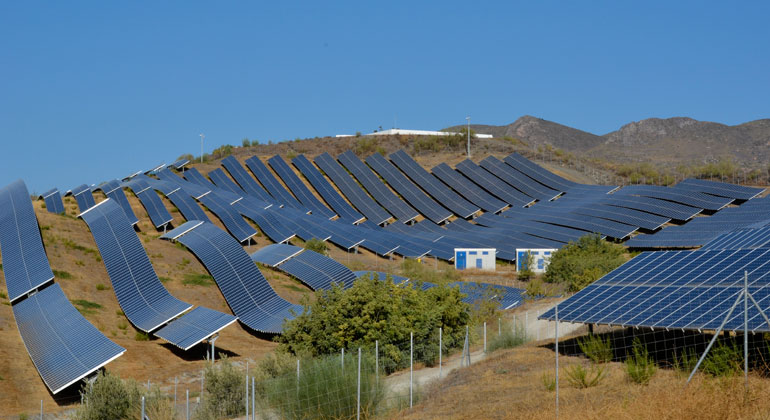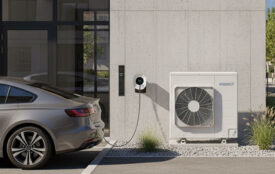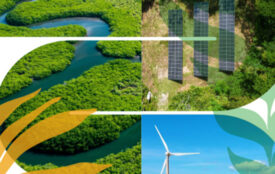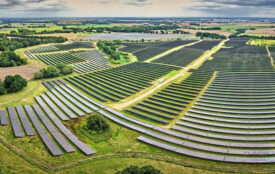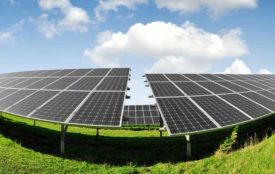Global Renewable Energy Investment Hit USD 807 Billion in 2024
Record investment in renewables, but growth pace slows to 7.3%.
Global investments in the energy transition reached a new record of USD 2.4 trillion in 2024 – a 20% increase from the average annual levels of 2022/23. About one-third was directed towards renewable energy technologies, pushing renewable energy investment to USD 807 billion.
Despite this milestone, year-on-year growth of renewables slowed significantly, with annual investments increasing by 7.3% in 2024, compared to 32% the year before, a new report by the International Renewable Energy Agency (IRENA) and the Climate Policy Initiative (CPI) finds.
Global Landscape of Energy Transition Finance 2025 was released ahead of the UN Climate Conference COP30 in Belém, Brazil. It aims to inform the global finance dialogue and support delegations by tracking investments in renewable energy technologies and their supply chains, looking at regional trends as well as finance sources and instruments.
Key findings:
- 96% of renewable energy investments went to the power sector, continuing a long-term trend.
- Global investment in solar PV hit a record with USD 554 billion in 2024, up by 49%.
- Investment in renewable power, grids, and battery storage exceeded fossil fuels investment in 2024, though fossil spending is on the rise
- Investment in energy transition technologies grew globally, but 90% remained concentrated in advanced economies and China, leaving emerging and developing countries behind.
Francesco La Camera, Director-General of IRENA said: “Investments in energy transition continue to grow but not at the pace needed to achieve the global goal of tripling renewable capacity by 2030. Funding for renewables is soaring but remains highly concentrated in the most advanced economies. As countries gather at COP30 to advance the ‘Baku to Belém Roadmap to 1.3 trillion’, scaling finance for emerging and developing countries is essential to make the transition truly inclusive and global.”
IRENA’s report shows advanced and major economies can draw on domestic financial resources to fund energy transitions. In contrast, lower-income countries depend on external support due to underdeveloped financial markets, limited fiscal capacity, high capital costs, and debt vulnerabilities amongst others.
Globally, nearly half of total investment in 2023 was provided as debt, most of it at market rates. The rest was invested through equity. Grants accounted for less than 1%. The urgent need to mobilise investments, combined with a scarcity of impact-driven capital such as low-cost debt and grants, risks exacerbating debt burdens.
Mr. Francesco La Camera added: “IRENA has long called for smarter use of public funds to unlock private investment through risk-mitigation tools. Yet the heavy reliance on profit-driven capital is leaving developing countries behind. Where private finance won’t flow, the public sector must lead, backed by stronger multilateral and bilateral cooperation and scaled-up climate finance.”
IRENA’s new report also highlights that investment in energy transition supply chains and manufacturing remains critical, but highly concentrated. China accounts for 80% of global investment in manufacturing facilities for solar, wind, battery and hydrogen technologies between 2018 and 2024. Positively, new factories are emerging outside advanced economies and China expanding energy security and socio-economic benefits of the transition to other developing economies.
Overall, global investment in factories producing solar, wind, battery and hydrogen fell by 21% to USD 102 billion in 2024, driven by a significant drop in investments for solar PV manufacturing. In contrast, battery factory investment nearly doubled to USD 74 billion, reflecting rising demand for storage in grids, electric vehicles (EVs) and data centres.
Foreign direct investment, through joint ventures, technology partnerships and knowledge sharing, will be vital to strengthen international cooperation and expand energy transition manufacturing in emerging and developing economies, including through South-South collaboration.
In addition, dedicated policies are needed to ensure these activities are undertaken in a socially and environmentally sustainable manner and that their benefits are shared equitably.
Read Global Landscape of Energy Transition Finance 2025
